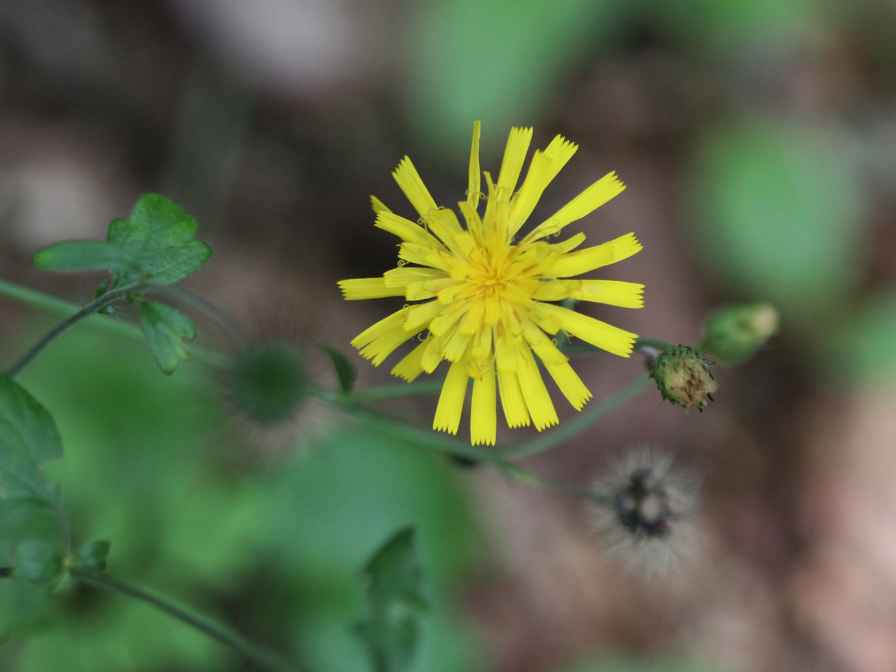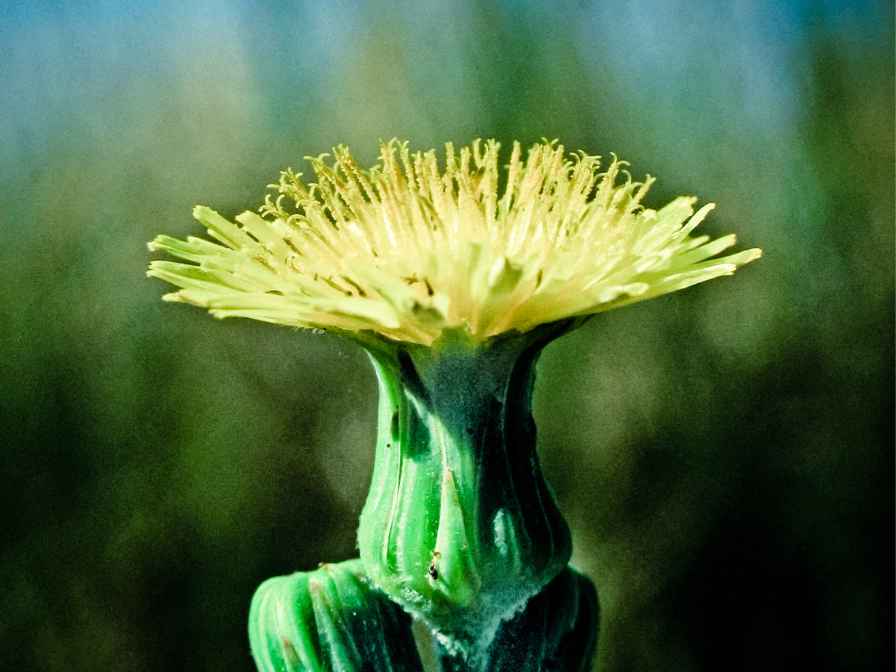When gone for the plants in the garden or the homesteading settings gardeners do look for herbs. Because these herbs are not only easy to grow, they add ornamental value to the garden, as well as these herbs are beneficial as medicine or as used in the kitchen.

Well, if you are looking for one such herb that is easy to care, for and has many beneficial traits such as medicinal and culinary usage, you are at the right spot. This herb is a cat’s ear plant. today we are going to talk about how to grow cat ear plants.
Catsear Plant
The cat’s ear plant (scientific name Hypochaeris radicata) is a perennial weed that belongs to the Asteraceae family. It is native to Europe but can also be found in other parts of the world, including North America, Asia, and Australia.
Cats’ ear plant has a rosette of leaves that are hairy and serrated, with a deep taproot. The leaves are also known as “dandelion-like” due to their similar appearance to dandelion leaves. In the spring and summer, the plant produces yellow, dandelion-like flowers on tall stems.
The plant is often considered a weed because it can spread quickly and easily in lawns, fields, and other areas. However, it is used as traditional as well as modern medicine to treat a variety of ailments, such as liver and kidney problems, digestive issues, and skin conditions.
You can cook its leaves as vegetables, or you can eat them raw, and also you can roast the roots to use them as a substitute for coffee. Also, there are medicinal uses that make this herb preferred by gardeners.
Benefits of growing Catsear plant
There are many benefits of growing cats’ ear plants. it has many traits which are not common with other herbs. Some of the important ones are as follows:
Medicinal properties
Catsear plant has been traditionally used in herbal medicine to treat a variety of ailments, such as liver and kidney problems, digestive issues, and skin conditions. You can use it to cure such problems at home.
Nutritious
The leaves of the cat’s ear plant are a good source of vitamins A, C, and K, as well as minerals like calcium and potassium. They can be added to salads or cooked as a vegetable. In this way, you will be able to meet your nutrition requirement as well.
Pollinator-friendly
The yellow flowers of the cat’s ear plant attract bees and other pollinators, making it a great addition to a garden or natural area. This will add to the fruiting and finally the yield of the other plants. You would be able to good yield as well.
Soil Improvement
The deep taproot of a cat’s ear plant can help to break up hard soil and improve drainage. You will get good soil along with having a beneficial herb.
Low maintenance
The cat’s ear plant is a hardy perennial that can thrive in a variety of soil types and growing conditions. It requires little maintenance once established. Once a little maintenance requirement is fulfilled, you are good to go.
Aesthetically pleasing
The dandelion-like flowers of a cat’s ear plant can add a pop of color to a garden or natural area. It adds good ornamental value to the garden. That is why it is mostly preferred. It has a beautiful flower that looks good to the eyes.
How to Grow Catsear Plants?
There are simple steps to follow to grow the cat’s ear plant. you just have to follow them patiently. Here are the steps to grow the cat’s ear plant.
Select the right location
Catsear plant can grow in a variety of soil types but prefers well-draining soil. It also needs plenty of sunlight, the location with a minimum of six hours of sunlight a day is good for it.
Soil preparation
Dig up the soil and remove any rocks or debris. Add compost or well-rotted manure to the soil to improve its fertility. You can add organic compost as well. Make sure the soil is in good shape and it has good drainage.
Sow the seeds
Cats’ ear plants can be propagated by seeds. Sow the seeds in early spring, after the last frost. Scatter the seeds over the soil and cover them with a thin layer of soil. make sure the seeds are well under the light layer of soil.
Water the seeds
Water the seeds gently to keep the soil moist but not waterlogged and water them regularly until they germinate. You can check the upper layer of the soil to check the moisture level of the sown cat’s ear seeds.
Thin out the seedlings
Once the seedlings have grown to a few inches tall, thin them out so that they are spaced at least six inches apart. This will allow the plants to have enough room to grow and prevent overcrowding.
Maintain the Plants
Catsear plant is a low-maintenance plant and does not require much attention once established. Water the plants regularly to keep the soil moist but not waterlogged. Fertilize the plants with a balanced fertilizer once or twice a year.
Overall, the Catsear plant is easy to grow and can thrive in a variety of growing conditions. It is a low-maintenance plant that can provide a variety of benefits, from its nutritious leaves to its ability to attract pollinators. You just need to give little attention to it.
Taking care of Catsear plant
Taking care of a cat’s ear plant is much easy. It is because it is a hardy herb that can do well on its own. Here are a few steps to take good care of the cat’s ear plant.
Watering requirements
Catsear plant prefers well-drained soil, so avoid overwatering. Water the plant deeply once a week, and adjust the watering schedule based on the soil moisture level. Over-watering can cause root rot. So, strictly avoid it.
Fertilizing requirement
Cat’s ear plant doesn’t need much fertilizer. However, you can apply a balanced fertilizer once or twice a year in the spring and fall to promote healthy growth.
Pruning requirements
Deadhead the flowers to prevent the plant from self-seeding and becoming invasive. Trim off the yellowed leaves and dead stems regularly to keep the plant looking neat. It will also develop the immune system of the cat’s ear plant to resist diseases.
Pests and Diseases
Cats’ ear plant is generally not prone to pests and diseases. However, you may encounter aphids, slugs, or snails, which can be treated with insecticidal soap or other natural remedies. Remove any infected leaves or plants to prevent the spread of diseases.
Winter Care and Division
The cat’s ear plant is a perennial plant that can survive mild winters. However, in colder climates, it may need winter protection such as covering with a layer of mulch or straw to protect the roots from frost. You need to cover it to keep it in good condition.
Over time, cats’ ear plants can form a large clump. You can divide the plant every few years in the spring or fall to keep it healthy and promote new growth.
Overall, a cat’s ear plant is a low-maintenance plant that requires minimal care. With proper watering, fertilizing, pruning, and protection from pests and diseases, a cat’s ear plant can thrive and provide a variety of benefits.
Harvesting and Using Catsear Plant

As mentioned earlier this plant has many medicinal and culinary benefits. That’s why you need to know how to harvest it, and how it can be used in raw and in harvested form.
Harvesting a Catsear plant
The leaves of a cat’s ear plant can be harvested when they are young and tender. Pick the leaves in the morning when they are freshest. Use a sharp knife or scissors to cut the leaves off at the base of the stem.
Eating raw
The leaves of a cat’s ear plant can be eaten raw in salads. Rinse the leaves thoroughly and remove any tough stems or veins. The leaves have a slightly bitter taste, similar to dandelion leaves.
Cooking
The leaves of a cat’s ear plant can also be cooked as a vegetable. Blanch the leaves in boiling water for a few minutes, then drain and sauté them in olive oil or butter with garlic and onion.
Coffee substitute
The root of a cat’s ear plant can be roasted and ground to make a coffee substitute. Wash and dry the roots, then roast them in a low-temperature oven until they are dark brown and fragrant. Grind the roasted roots and brew them like coffee.
Medicinal uses
The leaves and roots of the plant can be used to make teas, tinctures, or extracts. It is also used as traditional medicine for skin care conditions and digestive problems.
In a nutshell, catsear plant is an herb that is very much liked and proffered. It is because it has benefits being planted in the home or garden settings. It grows well and also spreads well. You will get good medicinal and culinary benefits from the cat’s ear plant.

